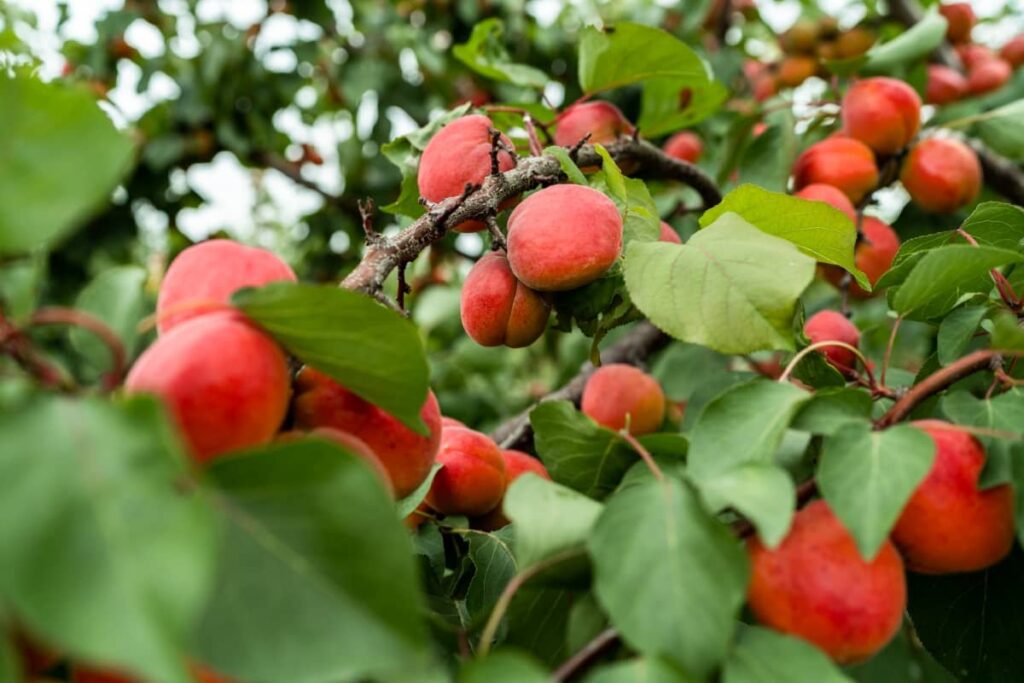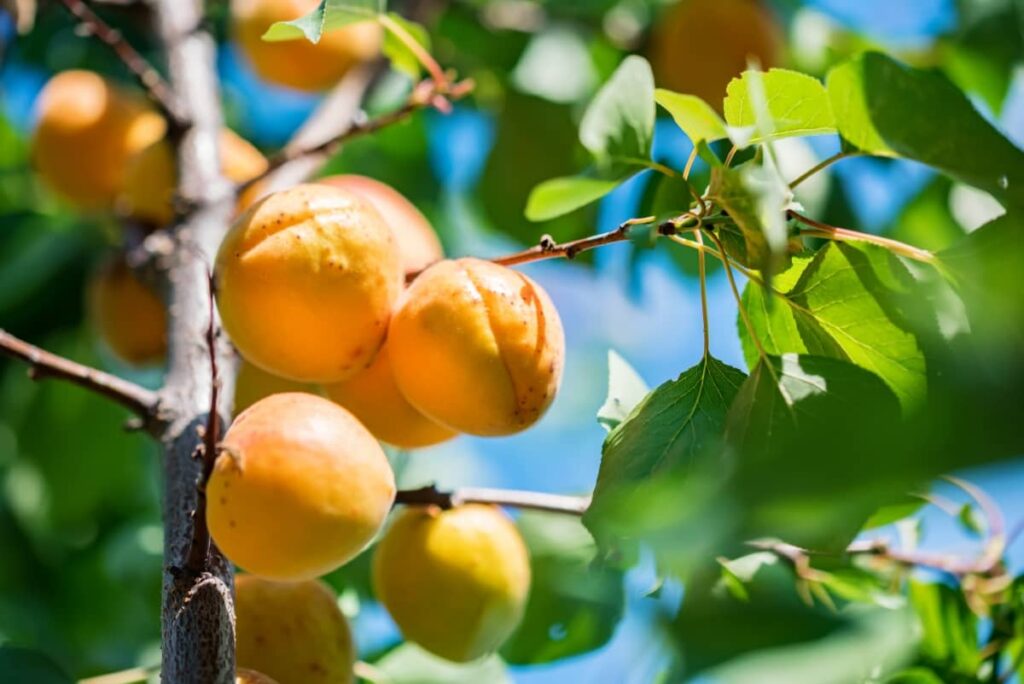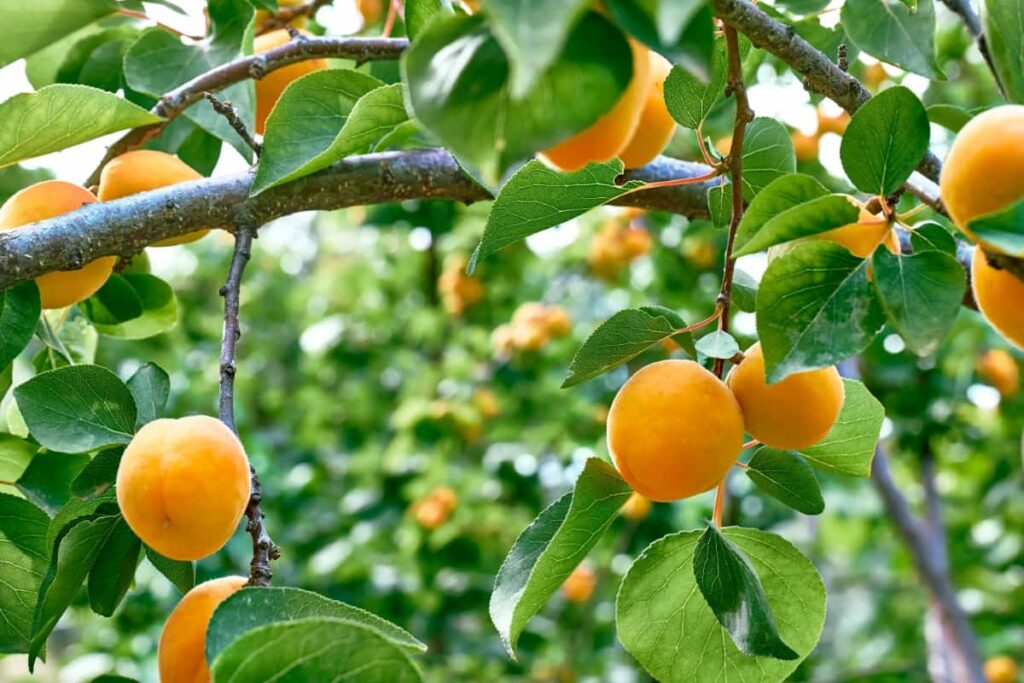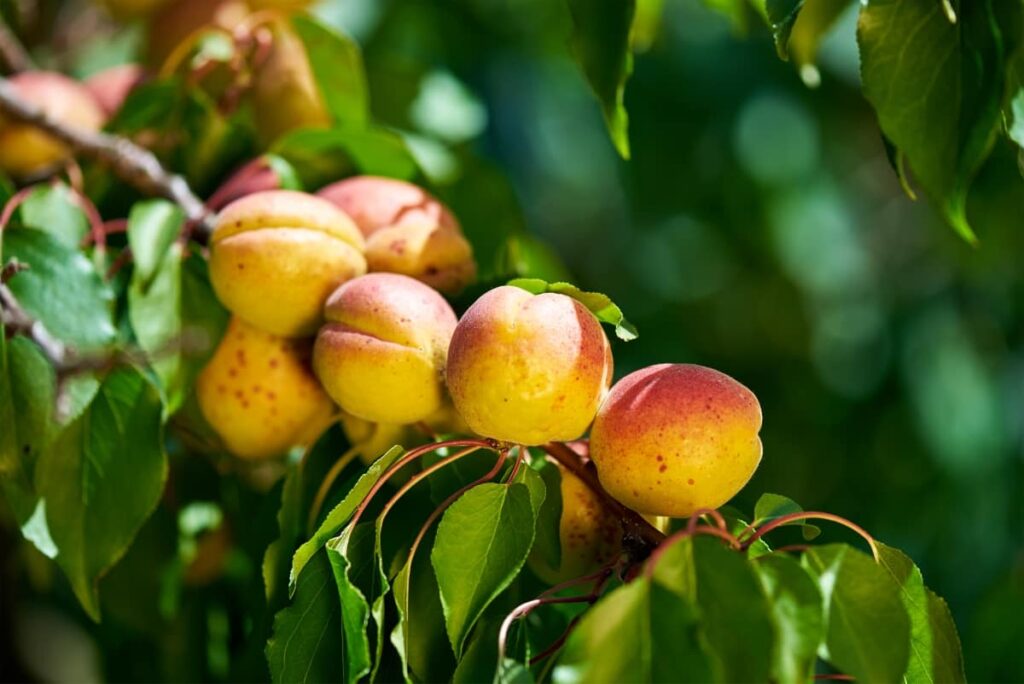Optimizing apricot fruit size requires a strategic approach involving proper care and cultivation techniques. Factors such as nutrient management, pruning, irrigation, and pest control play vital roles. This exploration delves into effective methods to enhance apricot fruit growth, ensuring a bountiful harvest and improved overall fruit quality.

How to Increase Apricot Fruit Size
Essential Nutrients for Maximizing Apricot Fruit Growth
In the quest for larger apricot fruits, understanding the crucial role of fertilizers in apricot nutrition becomes paramount. To achieve optimal apricot fruit size enhancement, it’s essential to focus on specific fertilizers that cater to the tree’s nutritional needs. To maximize apricot fruit growth, ensure well-drained soil with a pH of 6.0-7.5.
Apricots benefit from balanced fertilization, providing essential nutrients like nitrogen for leaf development, phosphorus for root growth, and potassium for overall fruit development. Incorporate organic matter into the soil and consider micronutrients like zinc and boron. By prioritizing apricot nutrition for bigger fruits through organic means, growers can witness significant improvements in fruit size and overall yield during harvest.
Innovative Irrigation Techniques for Larger Apricot Fruits
Innovative irrigation techniques play a pivotal role in cultivating larger apricot fruits, necessitating a strategic approach to water management. Apricot watering methods for large fruits involve adopting efficient and modern techniques to optimize fruit growth. Drip irrigation systems, utilizing precise water delivery directly to the root zone, prove instrumental in conserving water while ensuring consistent hydration for apricot trees.
Soil moisture sensors aid in monitoring hydration levels, enabling growers to adjust watering schedules based on real-time needs. By embracing these innovative irrigation strategies, growers can implement sustainable and effective apricot fruit growth techniques, fostering the production of larger, high-quality fruits.
Optimizing Soil Quality for Increased Apricot Size
To achieve increased apricot size, meticulous attention to soil quality is indispensable, focusing on pH and nutrient enrichment. Apricot soil preparation for bigger fruits entails optimizing pH levels and ensuring a well-balanced nutrient profile. Testing and adjusting soil pH to the ideal range of 6.0-7.5 creates an environment conducive to nutrient absorption, root development, and overall tree health. Incorporating organic matter, such as vermicompost and well-rotted manure, enhances soil fertility, providing essential nutrients crucial for apricot fruit size improvement.
Effective Fertilization Strategies for Bigger Apricots
Unlocking the secrets to bigger apricots involves employing effective fertilization strategies, particularly utilizing fertilizers with a balanced NPK ratio like 10-10-10. Apricot fertilization for bigger fruit size demands a strategic approach to timing and application methods. Applying a balanced fertilizer, such as NPK 10-10-10, during the tree’s active growth phases in early spring and late fall ensures a steady supply of essential nutrients.
Incorporating organic matter like compost complements this regimen, enhancing soil fertility. Deep-root application or broadcasting around the drip line effectively distributes nutrients for optimal apricot growth. By embracing these meticulous fertilization strategies, growers can cultivate apricot trees that are primed for larger fruit production, ultimately leading to a more fruitful and rewarding harvest in apricot large fruit cultivation.
In case you missed it: How to Increase Citrus Fruit Size: Exploring Optimization for Larger Citrus Fruit Growth

Pruning Practices to Encourage Larger Apricot Yield
Maximizing apricot yield through effective pruning practices involves strategic timing and precise techniques for larger fruit production. Apricot pruning techniques for large fruits revolve around careful planning and execution. Initiate major pruning during late winter or early spring to remove dead, damaged, or overcrowded branches, promoting sunlight penetration and improved air circulation within the canopy.
Thinning out excess fruit clusters ensures that the remaining fruits receive adequate nutrients, fostering robust growth and contributing to larger apricot size. Regularly check the tree for signs of disease or weakness, promptly eliminating affected branches. By adhering to these pruning practices, growers can create an environment conducive to apricot fruit size maximization, resulting in a prolific and high-quality yield during harvest.
The Role of Climate in Enhancing Apricot Fruit Size
Apricots flourish in regions with a temperate climate characterized by moderate temperatures and frost-free periods. The ideal temperature range for apricot cultivation falls between 15-30°C, ensuring the trees thrive in conditions conducive to fruit development. Additionally, apricot trees necessitate a minimum of 1000 hours of cold weather during the dormant time, a critical factor for a fruitful yield.
Adequate rainfall, approximately 600-800 mm per year, further contributes to optimal apricot growth. Recognizing the intricate relationship between apricots and climate is essential for growers seeking to optimize fruit size, emphasizing the need for strategic cultivation practices tailored to the specific climatic requirements for Apricot fruit growth optimization.
Organic Approaches to Boosting Apricot Fruit Dimensions
In the pursuit of larger apricot fruits, organic farming offers sustainable solutions. Embracing organic apricot farming for bigger fruits involves holistic management approaches that prioritize soil health, nutrient balance, and natural growth stimulants. Utilize compost and well-rotted manure to enrich the soil, fostering a nutrient-rich environment essential for apricot fruit size expansion.
Employ cover cropping and crop rotation to enhance soil structure and microbial diversity. Organic fertilizers, such as seaweed extracts and fish emulsion, contribute to gradual nutrient release, promoting sustained growth. Implement natural pest control methods to minimize chemical interventions that may impact fruit quality. Regularly monitor soil health and employ organic amendments to address deficiencies.
Pest and Disease Management for Healthier, Larger Apricots
Ensuring the vitality and size of apricots involves vigilant pest and disease management strategies. To achieve apricot pest control for healthy big fruits and safeguard fruit growth, adopt a multifaceted approach. Regularly inspect orchards for signs of pests and diseases, allowing for early intervention. Embrace organic pest control methods, like neem oil or insecticidal soaps, to mitigate harmful insects without compromising fruit health. Encourage natural predators and maintain orchard hygiene by removing fallen leaves to curb disease spread.
In case you missed it: How to Increase Guava Fruit Size: Management for Getting Bigger Guava Fruits

Disease-resistant apricot varieties can add an extra layer to apricot fruit growth protection. Timely pruning aids in optimizing air circulation, reducing the risk of fungal infections. By implementing these comprehensive pest and disease management practices, growers can not only ensure the health of apricot trees but also promote the development of larger, high-quality fruits.
Advanced Agricultural Technologies for Apricot Size Increase
As agriculture evolves, advanced technologies play a pivotal role in enhancing apricot size. Leveraging cutting-edge apricot growth technology for bigger fruits involves adopting innovative practices. Precision agriculture utilizes sensors and data analytics to optimize resource usage, ensuring apricot trees receive precise amounts of water and nutrients for maximum growth. Controlled-environment agriculture, including hydroponics or vertical farming, provides a controlled setting to enhance apricot fruit development.
Genetic modification and breeding technologies contribute to the creation of apricot varieties with enhanced size attributes. Drones and satellite imagery assist in monitoring orchards for early detection of stress factors. By integrating these advanced agricultural technologies, growers can embark on a journey of Apricot fruit size innovation, fostering not only larger apricots but also more efficient and sustainable orchard management.
Cultivar Selection for Maximizing Apricot Fruit Size
Cultivar selection is a critical factor in achieving larger apricot fruit sizes. When considering bigger apricot varieties, focus on factors such as growth habits, chilling requirements, and resistance to pests and diseases. Consider cultivars like “Moorpark,” known for large, sweet fruit, and “Tilton,” prized for its size and flavor.
Other options include “Harglow,” “Harglow’s Harlayne,” and “Harglow’s Harcot,” which are recognized for their consistently large apricots. Choose cultivars based on your climate and growing conditions for optimal results. By emphasizing both the how and when of cultivar selection, growers can strategically enhance apricot fruit size, ensuring a more abundant and high-quality harvest through effective apricot fruit size enhancement.
In case you missed it: How to Grow Curry Leaf Plants Faster: Best Tips to Increase Yield

Conclusion
In conclusion, optimizing apricot fruit size involves a multifaceted approach encompassing soil health, organic fertilization, innovative irrigation, meticulous pruning, climate considerations, and advanced agricultural technologies. By integrating these strategies, growers can create an environment conducive to apricot fruit growth, resulting in larger, healthier fruits.
- Management Pests and Diseases in Your Cotton Field
- Sheep Farming Business Plan for Beginners
- Aquaponic Farming at Home: A Step-By-Step Guide
- Profitable Village Farming Business Ideas in 2024
- High-Yield Aquaculture: Fast-Growing Fish for Farming
- Effective Fish Pond Construction Techniques for Beginners
- Irrigation and Water Management in Pineapple Farming
- Blossom to Harvest: Mastering Flowering and Pollination in Papaya Farming
- Pig Fattening Essentials: From Selection to Sale for Beginners
